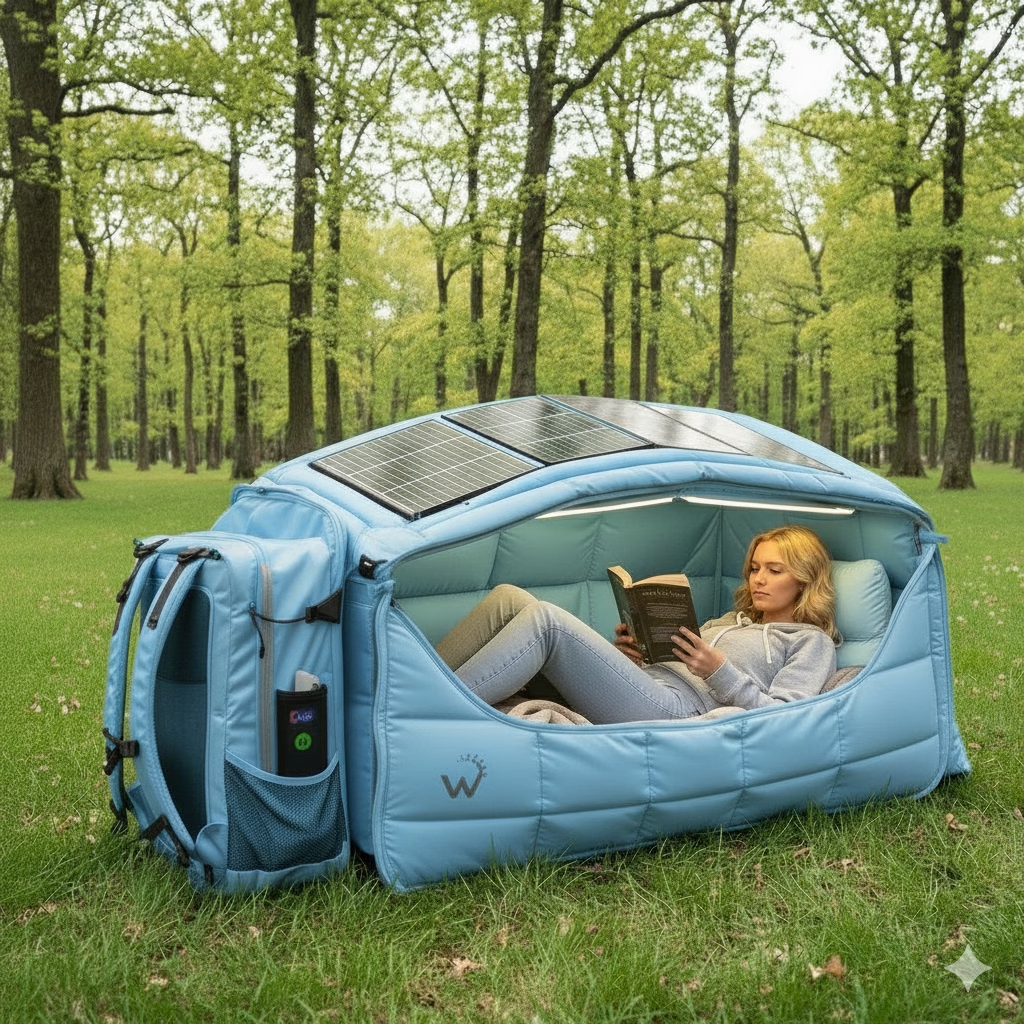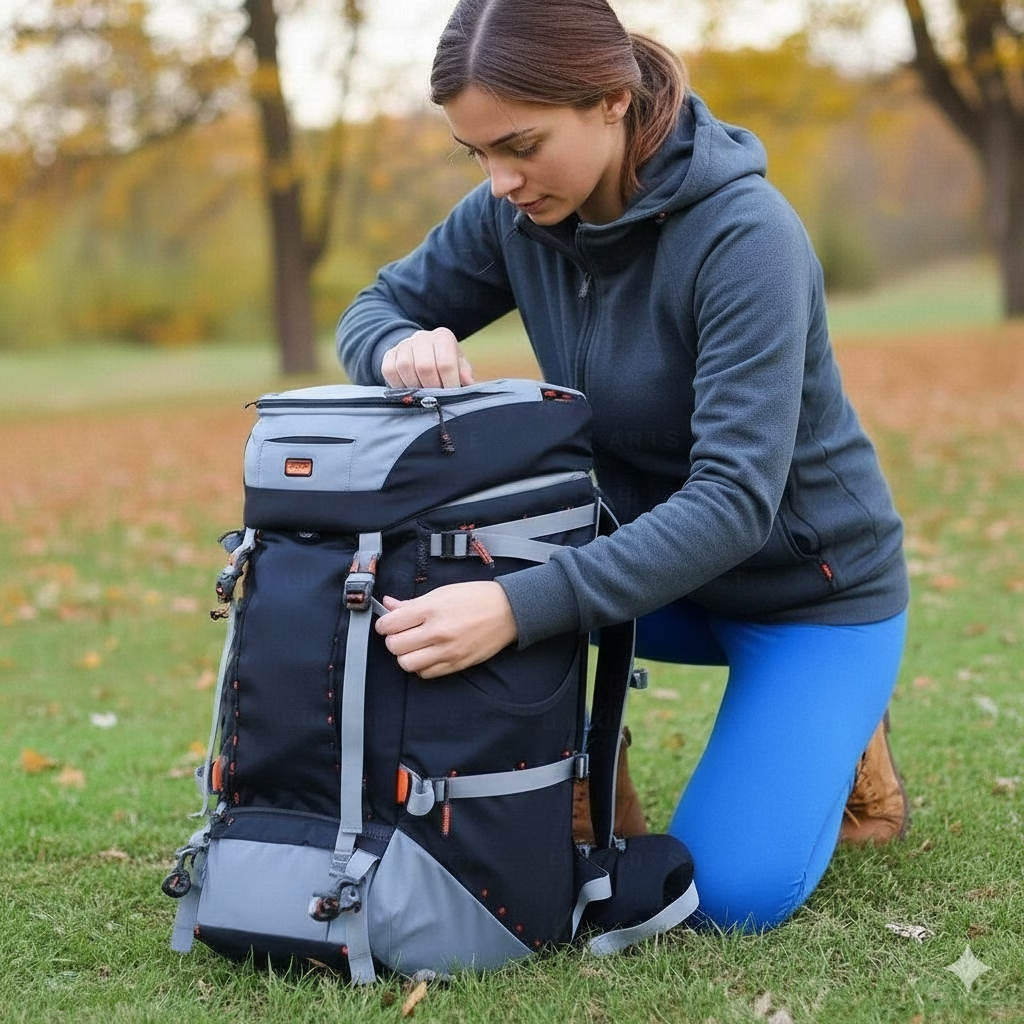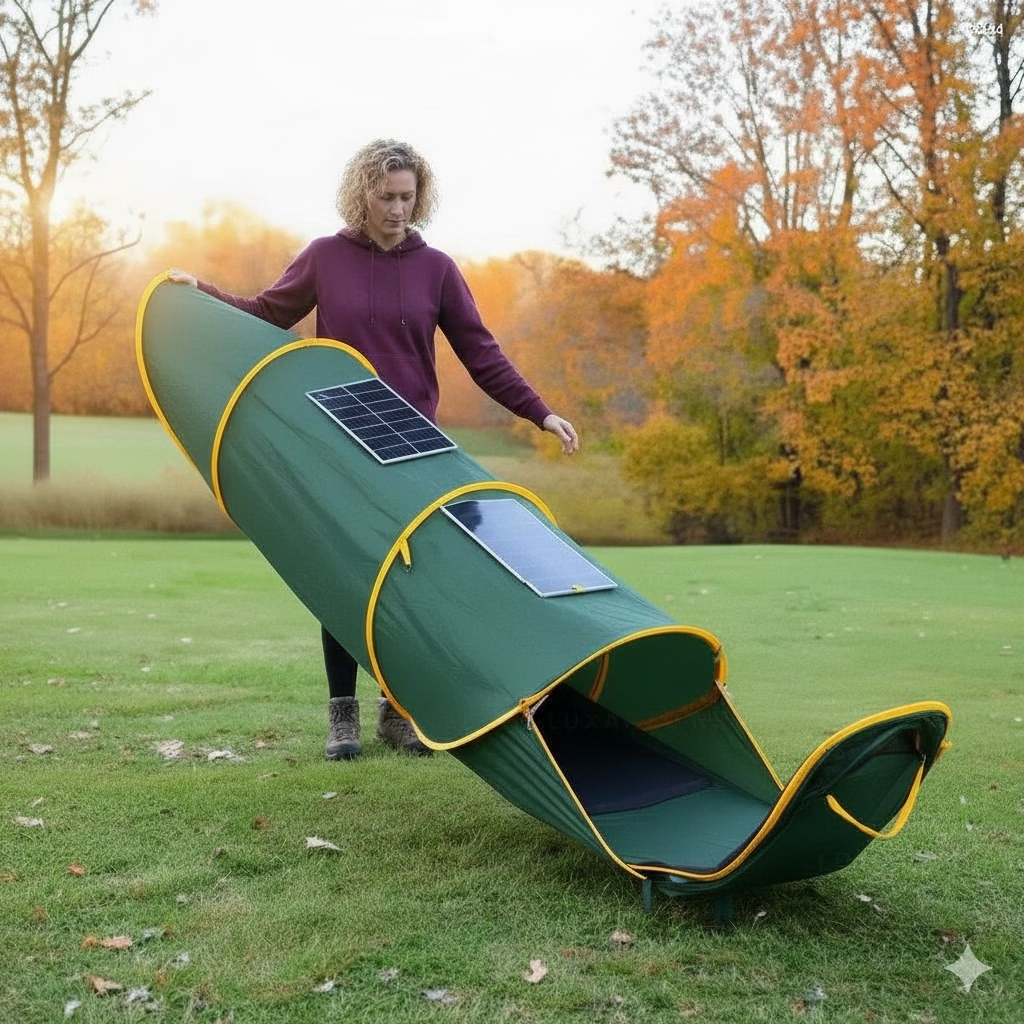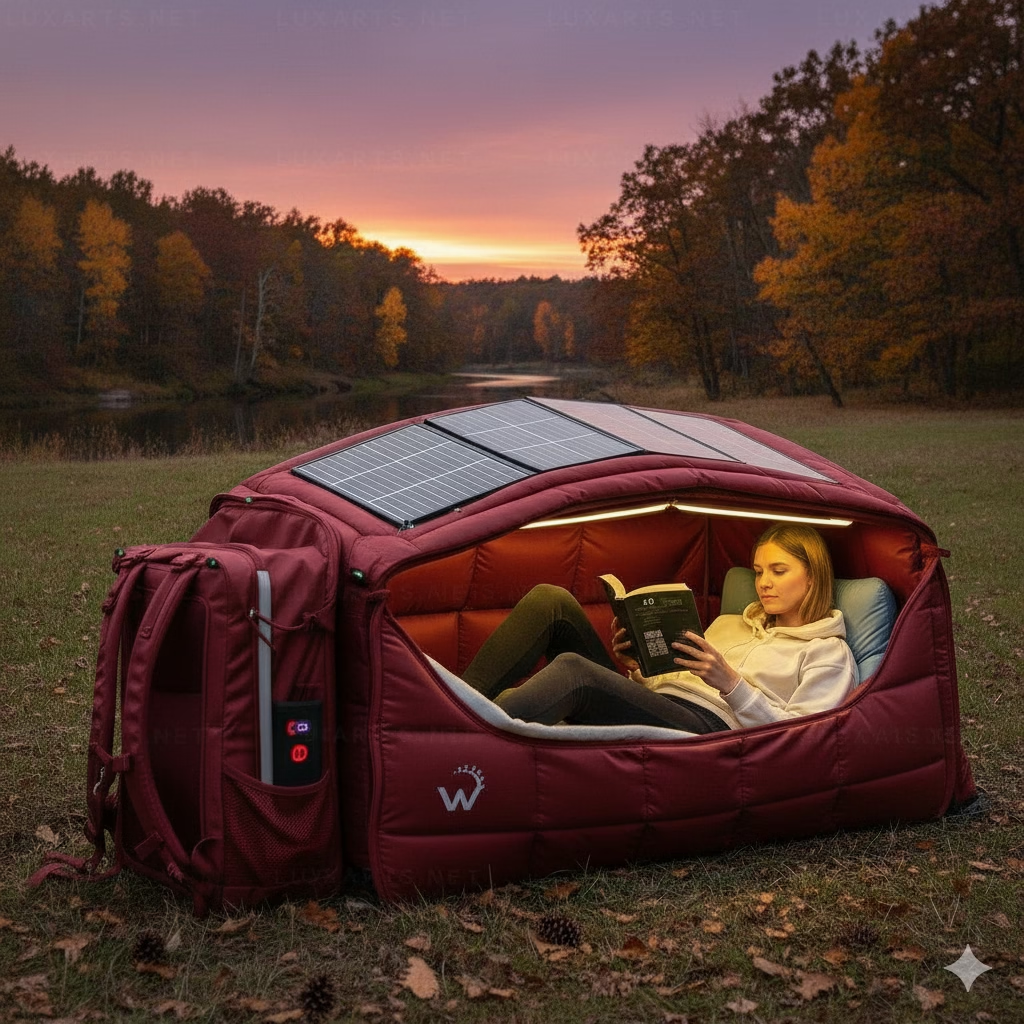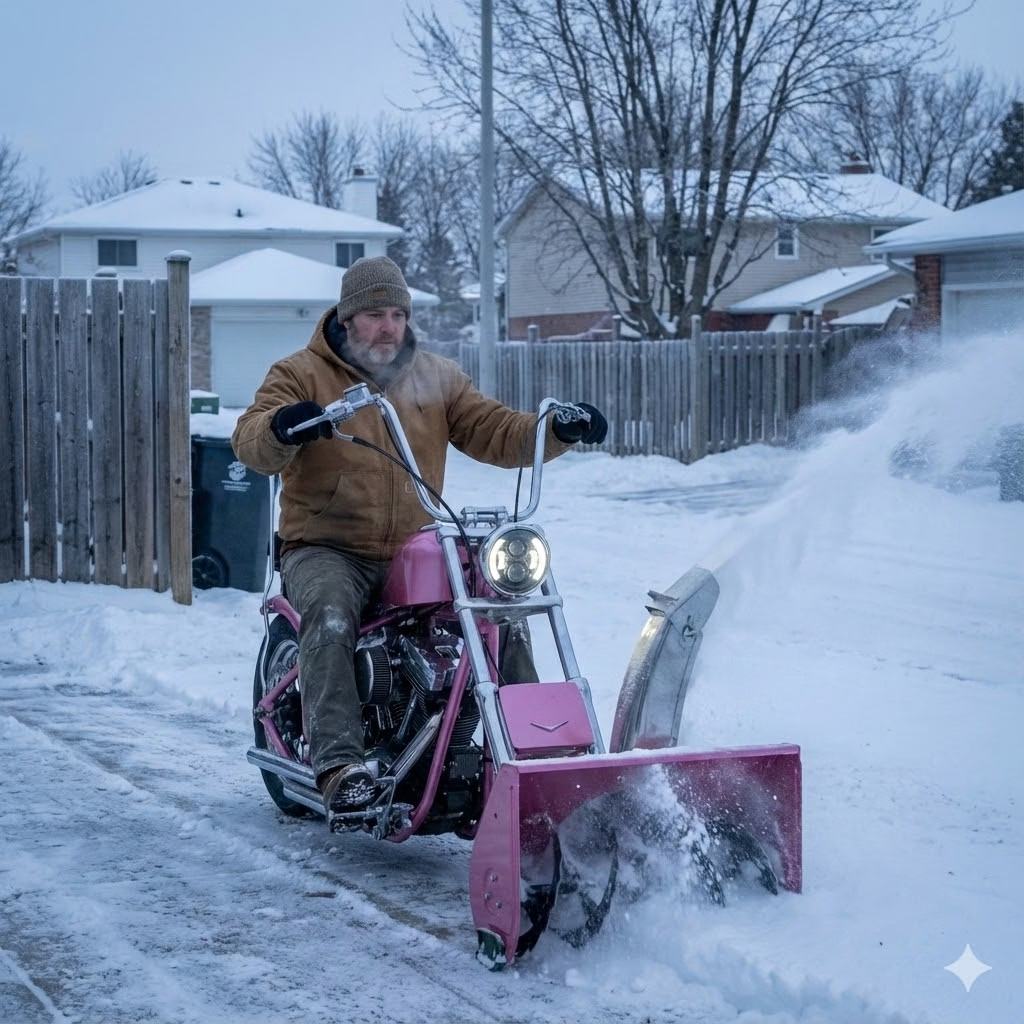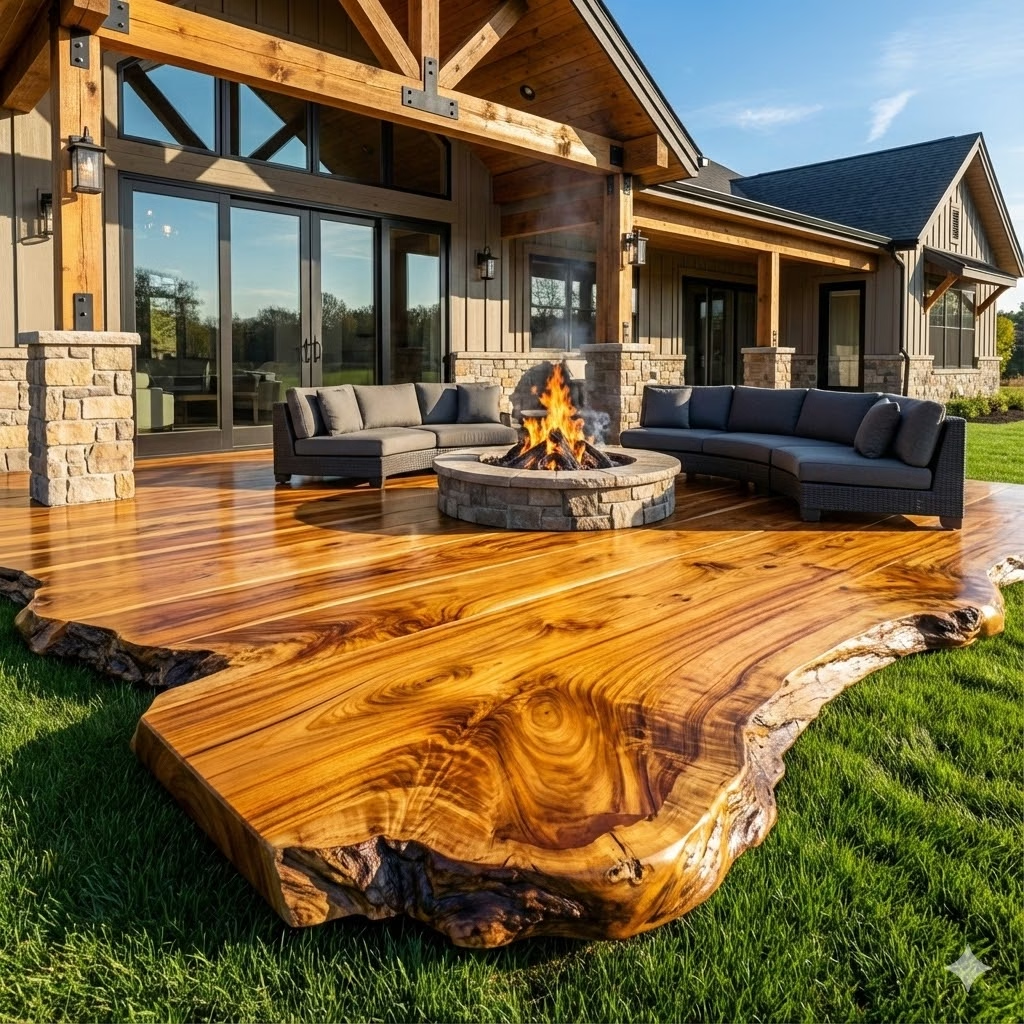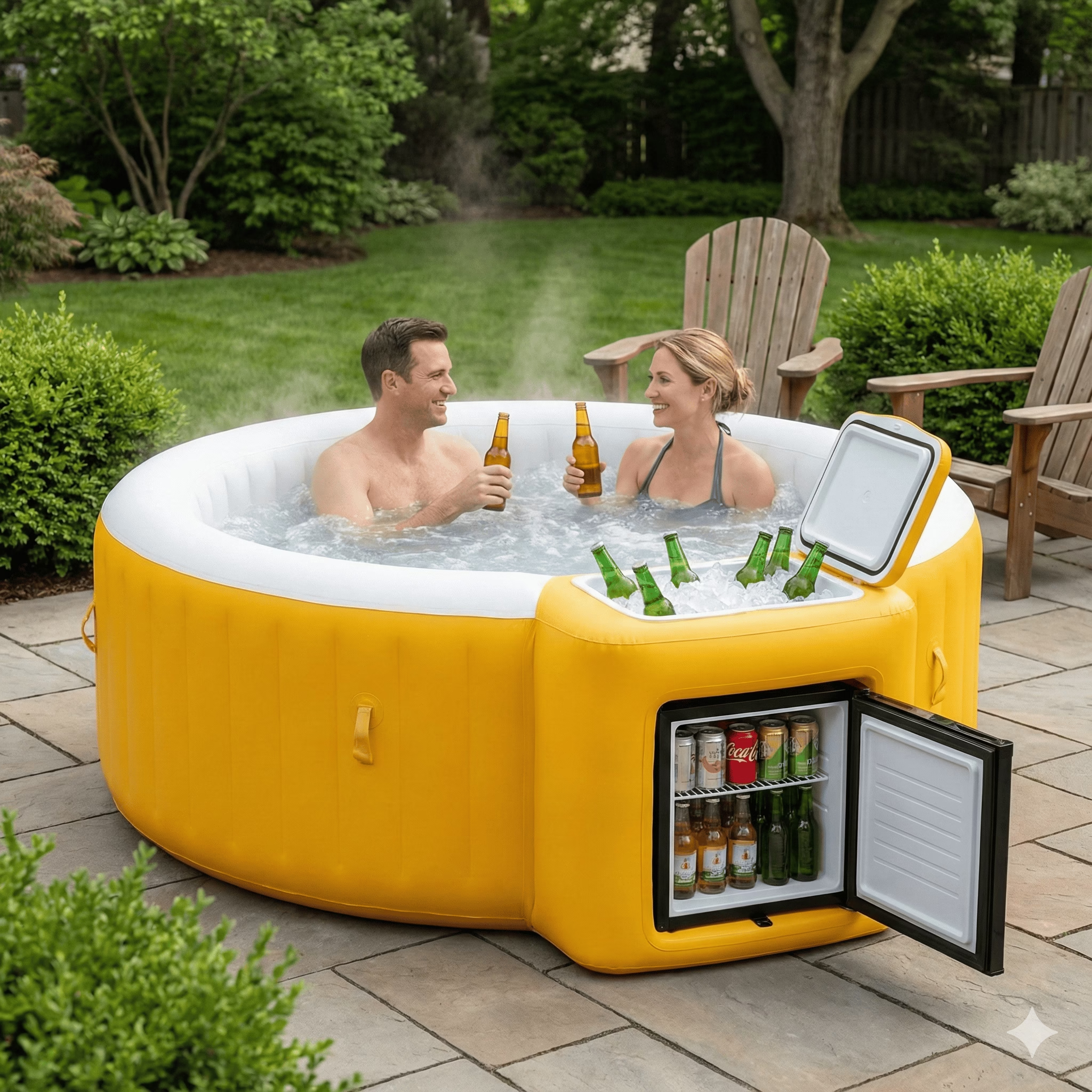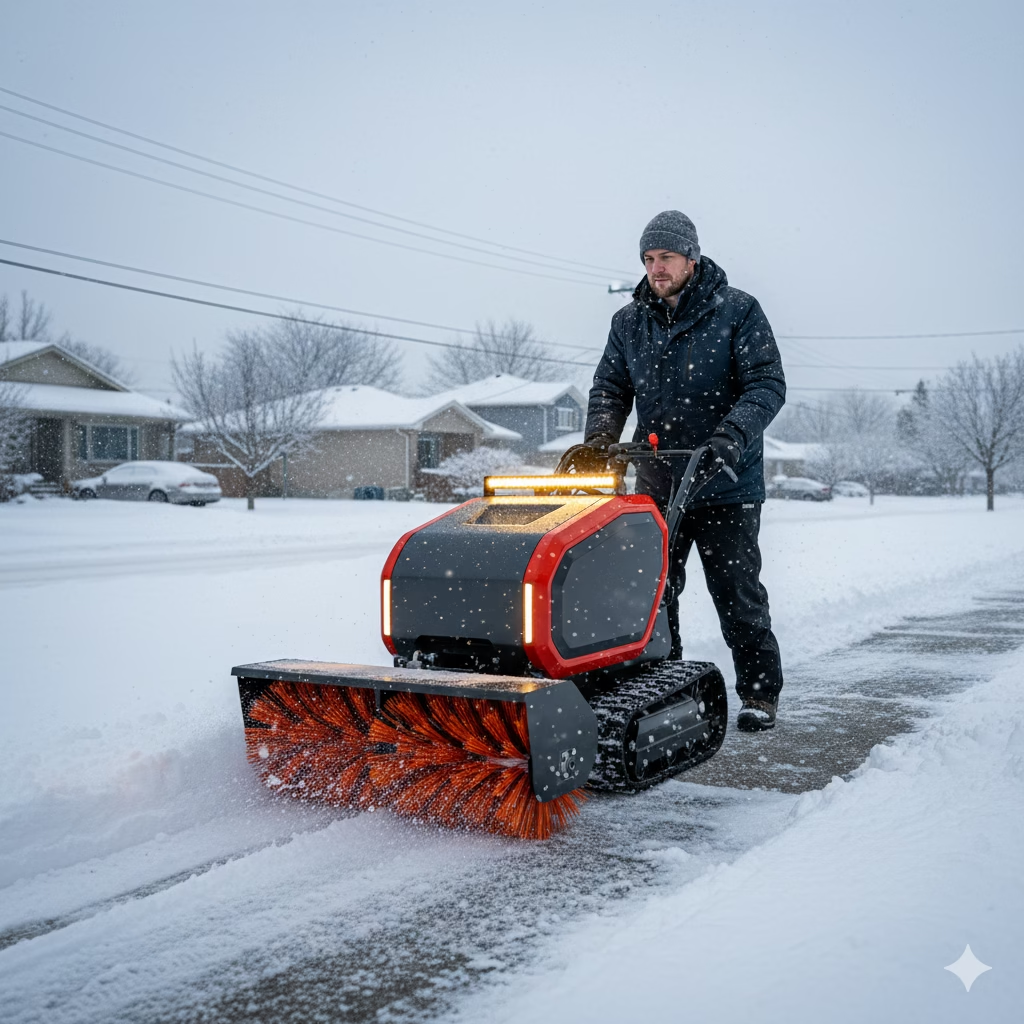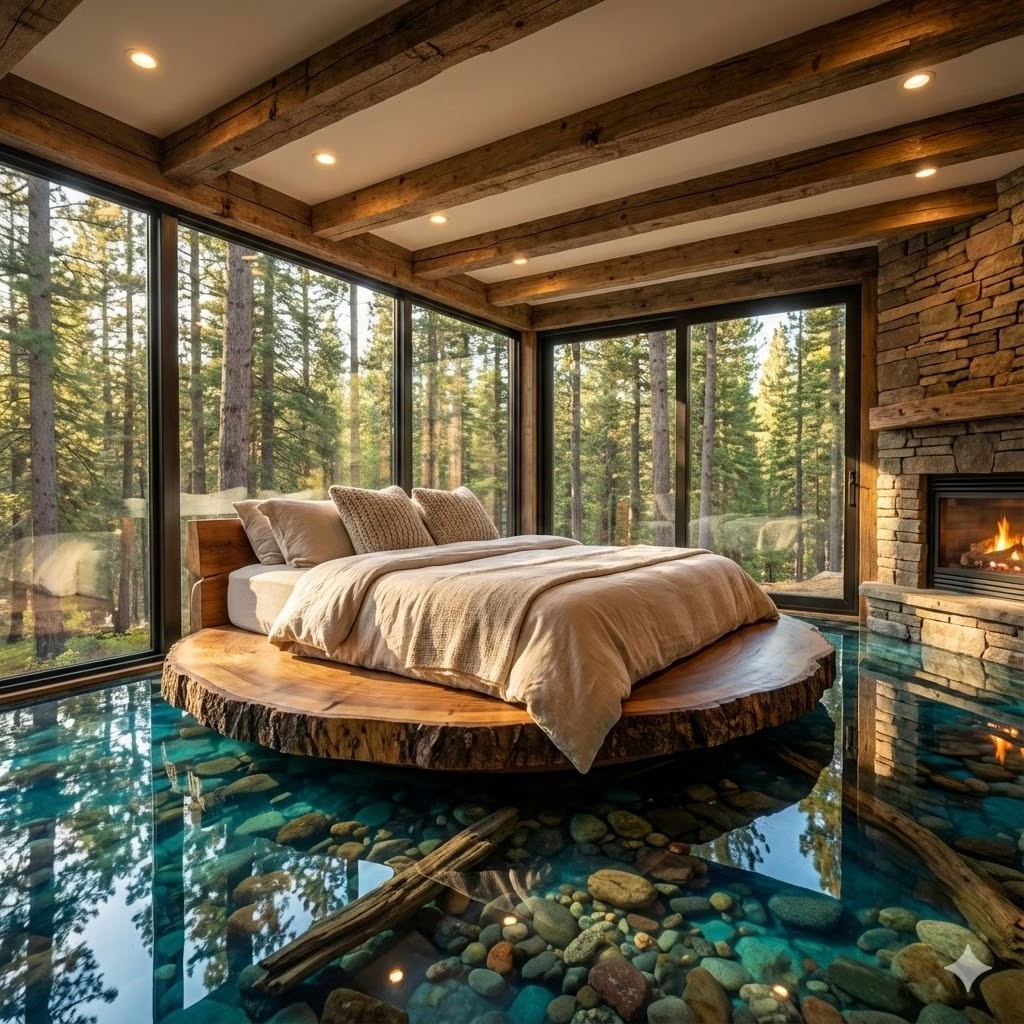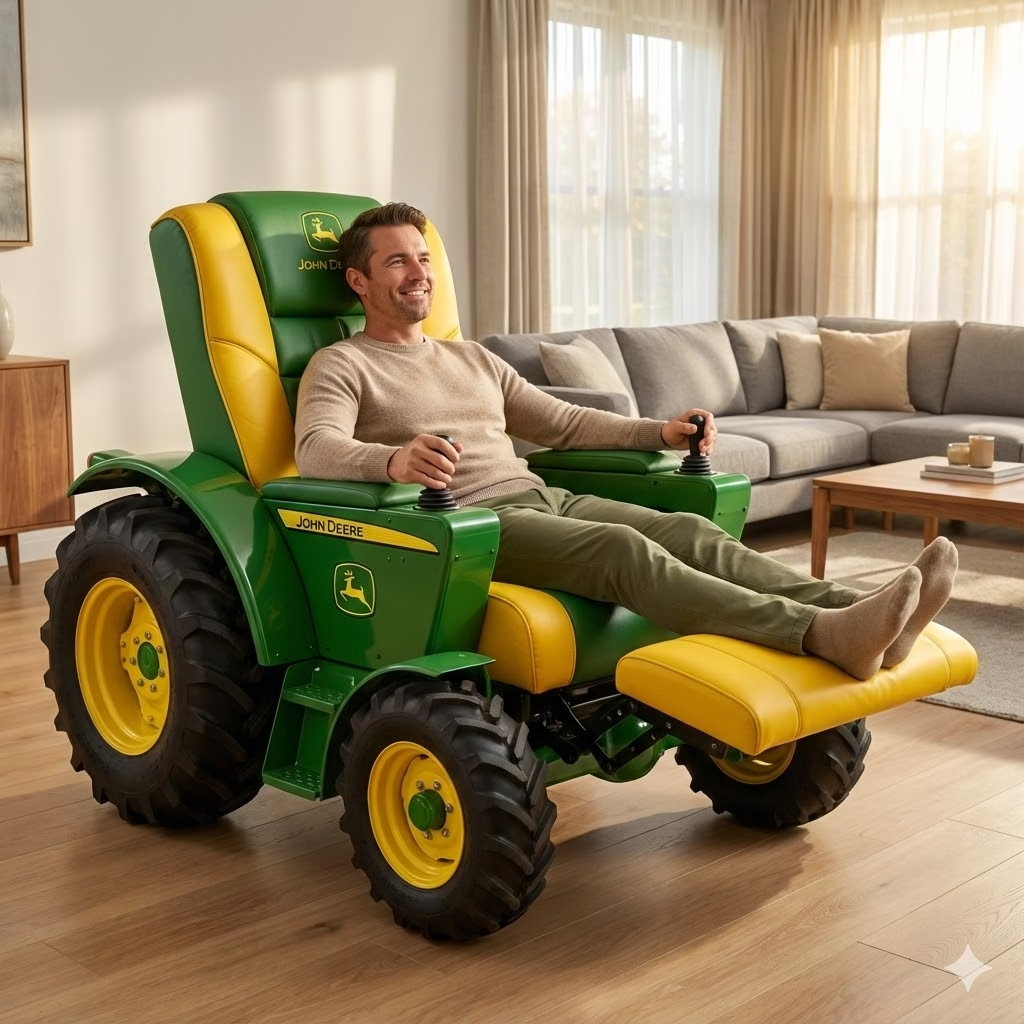In the world of outdoor gear and emergency preparedness, few innovations have made as significant an impact as the backpack bed. This ingenious design combines multiple essential items into one compact, portable package that’s revolutionizing how we think about camping, emergency shelter, and helping those experiencing homelessness. Whether you’re an outdoor enthusiast seeking hassle-free camping gear, a disaster prepper building your emergency kit, or someone looking to support humanitarian efforts, understanding the backpack bed phenomenon reveals a perfect marriage of functionality, compassion, and innovative design.
What Is a Backpack Bed?
A backpack bed is an ergonomic backpack, a three-windowed single person tent, a sun and wind shelter, and comes with a built-in mattress. This multifunctional design eliminates the need to carry separate items, dramatically reducing pack weight and complexity while increasing convenience.
There are two primary categories of backpack beds serving different but equally important purposes: outdoor recreation models and humanitarian shelter models designed for those experiencing homelessness.
Where can buy it? Try finding it on Amazon (Affiliate link)
Outdoor Recreation Backpack Beds
The Ultimate Camping Innovation
The SEASONFORT Backpack Bed meets the toughest US tent fire standard CPAI-84 and Europe’s elite chemical safety standard REACH, ensuring safety without compromising performance. This Australian-designed innovation has earned recognition in design museums worldwide for its elegant solution to a common camping challenge: carrying too much gear.
Key Features for Campers
Four-in-One Functionality: Instead of juggling a backpack, tent, sleeping pad, and sun shelter, outdoor enthusiasts get everything in one integrated system. This dramatically simplifies packing and reduces the mental load of planning camping trips.
Built-In Mattress: The integrated sleeping pad means you’re never choosing between comfort and pack weight. The mattress provides insulation from cold ground and cushioning for restful sleep without adding bulk.
Three-Windowed Tent Design: Proper ventilation prevents condensation buildup while maintaining protection from elements. The windowed design also provides views of your surroundings and reduces feelings of confinement.
Ergonomic Carrying System: Unlike traditional sleeping bags strapped awkwardly to backpacks, the integrated design distributes weight evenly across your back and shoulders, reducing fatigue on long hikes.
Weather Protection: Four-season capability means reliable shelter in various conditions, from summer backpacking trips to winter emergency situations.
Ideal Users
Motorcycle campers, outback horse riders, kayakers, and canoeists no longer complain about the weight and size of gear they ride or paddle with. The backpack bed solved these challenges with excellent balance and weight distribution. Solo hikers, bikepacking enthusiasts, and minimalist campers particularly appreciate how this design reduces gear complexity while maintaining comfort and safety.
Humanitarian Backpack Beds for Homeless Populations
Life-Saving Emergency Shelter
The Backpack Bed is an emergency bed that saves lives of homeless people on the street, providing both shelter and a bag to keep belongings while immediately improving dignity, health, sleep, warmth, comfort and safety. This application of backpack bed technology addresses a critical humanitarian need.
Design Features for Street Living
With a net weight of 3 kg (6.4 lbs), the Backpack Bed provides six functions in one: ergonomic backpack with lockable key pocket and storage, and is intended for four seasons with simple, instruction-free use. The expandable design keeps bedding and belongings clean, dry, and easily carried inside with multiple storage zones.
The ergonomic backpack styling and shape ensures dignity for homeless individuals so they don’t appear to be carrying bedding on their back. This thoughtful design consideration addresses the emotional and psychological needs alongside physical shelter requirements.
Practical Humanitarian Benefits
The 6.6-pound backpack bed is made of fire-retardant fabric and offers four-season protection, a 6-foot mattress, full-body mosquito net and storage pockets that can hold more than 44 pounds, with built-in insulation allowing use on any urban terrain including concrete and ice.
These features directly address common challenges faced by unhoused individuals:
- Weather Protection: Insulation protects against hypothermia and frostbite
- Storage Security: Lockable pockets and secure compartments keep important documents and belongings safe
- Easy Maintenance: Unzips flat for cleaning and uses wipeable materials
- Mosquito Protection: Full-body netting prevents insect-borne diseases
- Fire Safety: Fire-retardant materials reduce risk in urban environments
Community Impact
Backpack Bed for Homeless is a 501(c)(3) charity that partners with over 1,000 homeless services and has provided life-saving Backpack Beds to people on the street across the USA. Recent initiatives include campaigns in cities like Chicago and Kansas City, where thousands of backpack beds have been distributed through local agencies and churches.
Emergency Preparedness and Disaster Relief
The Perfect Bug-Out Bag Foundation
For disaster preparation, the Backpack Bed is the perfect go bag—there’s no faster bug-out bag to pre-pack for disaster prepping, providing an all-in-one solution to add your emergency kit. Emergency management experts recommend having shelter readily available, and backpack beds fulfill this requirement while remaining compact enough for home storage.
Disaster Relief Applications
When natural disasters strike, backpack beds can be rapidly deployed to provide immediate shelter for displaced individuals. Their durability, weather resistance, and self-contained design make them ideal for emergency distribution programs.
Comparing Backpack Beds to Traditional Camping Gear
Weight and Space Efficiency
Traditional camping requires separate items: backpack (2-5 lbs), tent (3-8 lbs), sleeping pad (1-2 lbs), and potentially a bivy or sun shelter. Combined weight easily reaches 10-15 pounds before adding clothing and supplies. A backpack bed weighing 6-7 pounds delivers equivalent functionality with 40-50% weight savings.
Setup Simplicity
Conventional camping involves pitching a tent (finding stakes, assembling poles, securing guy lines), inflating a sleeping pad, and organizing gear. Backpack beds unfold in minutes without requiring tools, stakes, or complicated instructions. This simplicity proves invaluable when arriving at camp in darkness, inclement weather, or when exhausted.
Cost Considerations
While backpack beds represent a significant upfront investment, comparing total costs reveals value. A quality backpack, tent, and sleeping pad easily total $300-600 or more. Backpack beds typically range from $200-400 for outdoor models, offering comparable or better functionality at competitive pricing.
Materials and Construction
Modern backpack beds utilize advanced materials including:
TrexSmart Fabric: Invented specifically for durability, weather resistance, and ease of cleaning. This proprietary material withstands repeated use while maintaining flexibility and comfort.
Fire-Retardant Coatings: Meeting international safety standards for both outdoor recreation and emergency shelter applications.
Insulation Systems: Multi-layer designs trap body heat while allowing moisture to escape, preventing condensation buildup that reduces effectiveness.
Reinforced Stress Points: High-wear areas receive additional reinforcement ensuring longevity even with daily use.
Care and Maintenance
Maintaining your backpack bed ensures years of reliable service:
Regular Cleaning: Unzip flat and shake out debris. Wipe down with damp cloth and mild soap. Allow to fully dry before storage.
Storage: Store in cool, dry location away from direct sunlight. Avoid compression storage for extended periods to maintain insulation loft.
Inspection: Periodically check zippers, seams, and fabric for damage. Address small repairs promptly to prevent larger issues.
Waterproofing: Reapply water-repellent treatment annually or as needed to maintain weather resistance.
Making a Difference: Supporting Homeless Initiatives
For those moved by the humanitarian applications of backpack beds, numerous ways exist to help:
Direct Donations: Organizations like Backpack Bed for Homeless accept financial contributions that directly fund backpack bed distribution to those in need.
Volunteer Distribution: Many cities partner with local agencies to distribute backpack beds. Volunteers help connect these resources with individuals who need them most.
Awareness: Sharing information about backpack bed programs helps communities understand innovative solutions to homelessness challenges.
The Future of Portable Shelter
Backpack bed technology continues evolving with improvements in materials, weight reduction, and functionality. As more people discover these innovative solutions—whether for recreation, emergency preparedness, or humanitarian purposes—the design influences broader outdoor industry trends toward integrated, multifunctional gear.
Conclusion
The backpack bed represents a paradigm shift in how we approach portable shelter. By combining essential items into one thoughtfully designed package, it serves outdoor enthusiasts seeking simplicity, emergency planners requiring reliable gear, and humanitarian organizations helping vulnerable populations. Whether you’re planning your next camping adventure or looking to support those experiencing homelessness, backpack beds demonstrate how innovative design can simultaneously serve recreation, preparedness, and compassion. In a world where we often separate gear by purpose, the backpack bed reminds us that the best solutions often come from thinking holistically about human needs.

